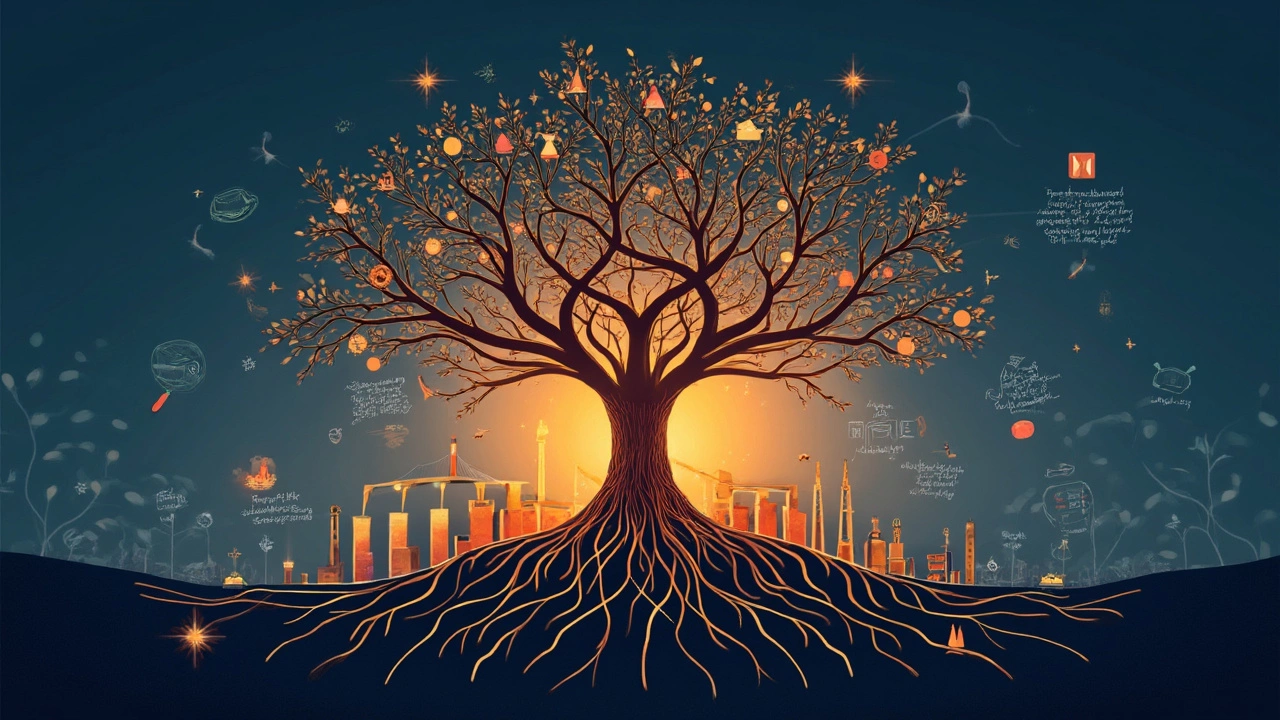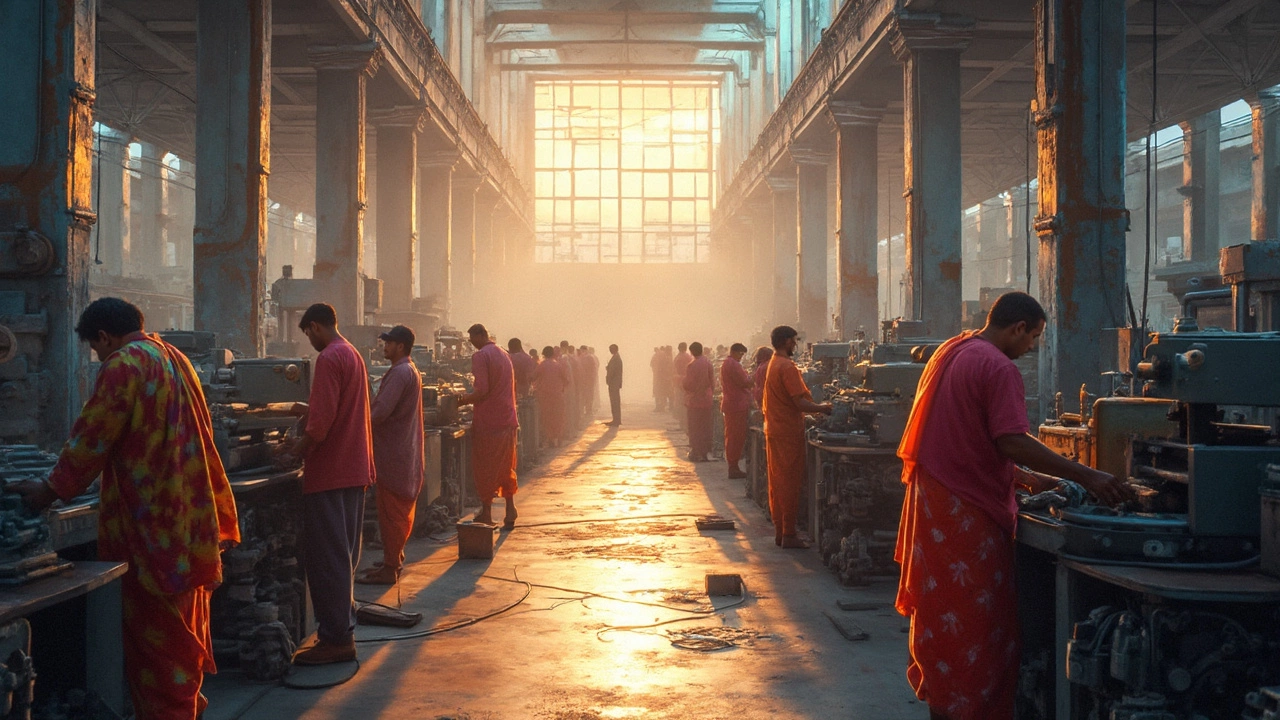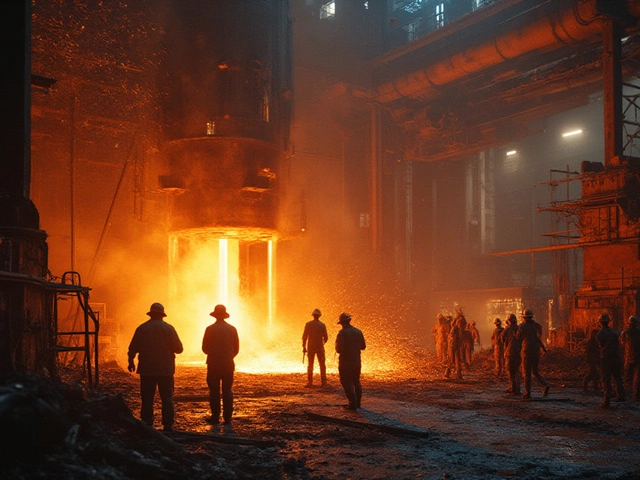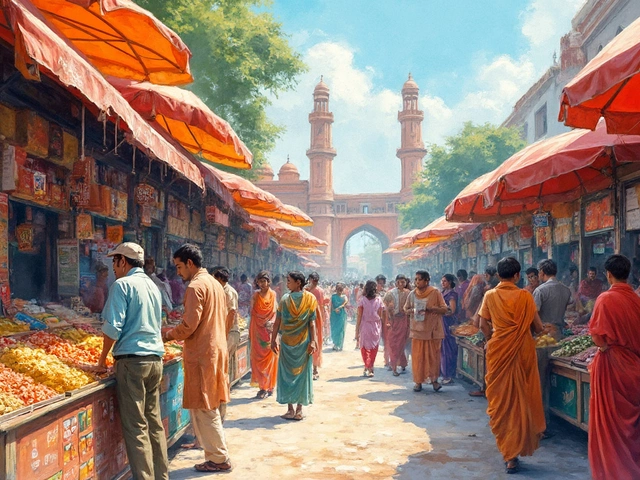When you think of manufacturing, what comes to mind? Factory floors, assembly lines, maybe even robots whizzing around. But there's a lot more going on beneath the surface. Manufacturing continues to be a powerhouse for many economies around the world because it creates jobs, spurs innovation, and boosts exports.
Let's start with jobs. Manufacturing isn't just about machines; it's about people. While automation is a growing trend, humans still play a crucial role in operations. Manufacturing jobs often provide stable incomes and help build skills.
Innovation is another biggie. Manufacturing doesn't just adopt technology; it often pioneers it. From robotics to 3D printing, this sector is at the forefront of technological breakthroughs. This not only propels companies forward but also brings benefits to society at large.
Then there are government schemes trying to give a helpful nudge. Many governments create policies to bolster manufacturing activity—think tax breaks, subsidies, or infrastructure development. These schemes aim to make the manufacturing environment friendlier, enabling faster growth and higher efficiency.
But it's not all rosy. The sector faces challenges like global competition and the need for constant technological upgrades. Adapting and thriving requires knowing these challenges and finding smart solutions.
- The Role of Manufacturing in Economic Growth
- Job Creation and Workforce Development
- Innovation and Technological Advancements
- Government Schemes to Support Manufacturing
- Challenges and Opportunities Ahead
The Role of Manufacturing in Economic Growth
Manufacturing is often seen as the backbone of a nation's economy. But what's the big deal about it, really? It's not just the tangible goods producers churn out but the ripple effects those products have on the wider economic fabric. Let's break it down.
Job Creation
The manufacturing sector is a major driver of job creation. For every new manufacturing job, there are several other jobs generated in related areas like supply chain, distribution, and retail. It's a multiplier effect. For instance, according to the National Association of Manufacturers, every manufacturing job supports around four additional jobs in the economy.
Boosting GDP
A healthy manufacturing sector plays a significant role in a nation's GDP. In countries like Germany and Japan, manufacturing accounts for about 20% of GDP. It directly impacts economic output, and an increase or decline in manufacturing activity often signals changes in economic performance.
Innovation Catalyst
Let's not forget innovation. Manufacturing isn't just about production; it's a hotbed for research and development (R&D). Companies invest in new technologies and processes to remain competitive. This R&D activity spills over to other sectors, driving technological advancements and productivity improvements across the economy.
Global Trade and Exports
A strong manufacturing base enhances a country's export capability. By producing goods domestically, countries can maintain a favorable trade balance, reduce import dependency, and generate foreign exchange. For instance, in 2022, China's manufacturing exports amounted to over $4 trillion, highlighting its role as a global manufacturing giant.
Table of Manufacturing GDP Contribution
| Country | Manufacturing GDP (%) |
|---|---|
| Germany | 22% |
| Japan | 21% |
| United States | 12% |
| China | 27% |
All in all, manufacturing isn't just about making things. It's about sustaining an entire economy and helping it grow. When factories thrive, so do the communities and economies around them.
Job Creation and Workforce Development
Manufacturing is a biggie when it comes to creating jobs. It's not just about numbers, though they've got plenty: for each manufacturing job, there's a solid chain reaction that creates more jobs in other sectors. That’s called the multiplier effect, and it's what makes manufacturing such a powerful job engine.
Let's look at some specifics. In countries where manufacturing is a major player in the economy, the sector provides stable employment to a vast chunk of the workforce. According to a recent study, for every one job in manufacturing, there are about 2.5 additional jobs created within the economy. These jobs range from supply chain management to retail and support services.
Skills and Training
So, what happens in terms of developing skills and workforce? Well, many companies within the industry offer training programs that equip workers with new skills relevant to today’s high-tech manufacturing needs. We're talking about jobs in areas like robotics, computer-aided design, and logistics. As new technologies emerge, these training programs become even more crucial.
If you think these jobs are all about physical labor, think again. Modern manufacturing roles demand cognitive skills and technical know-how. It's more about problem-solving and adaptability than just doing repetitive tasks.
Government Support
Governments aren't just standing by either. Through government schemes designed to boost manufacturing, there are often subsidies or grants available to upskill the workforce. Such schemes can be a game-changer for both young entrants looking to start a career and seasoned workers aiming to upgrade their skills.
| Country | Manufacturing Jobs Created | Multiplier Effect (Additional Jobs) |
|---|---|---|
| USA | 12 million | 30 million |
| Germany | 8 million | 18 million |
The stats speak for themselves. Manufacturing doesn't just make stuff; it builds jobs and shapes skilled workers who can adapt and thrive in various roles. With continued support and innovation, the workforce development outlook remains promising.

Innovation and Technological Advancements
When we talk about the manufacturing industry being on the cutting edge, we're not exaggerating. This sector doesn’t just passively consume technology; it's often where new tech gets its start. Remember the early days of robotics? Those innovations largely sprang from factory floors trying to improve efficiency.
One of the most significant recent advancements is the rise of the Industrial Internet of Things (IIoT). By connecting machinery and equipment via the internet, companies can gather detailed data to optimize production processes. This isn't just a trend but a fundamental shift in how production is done. A study showed that factories using IIoT could reduce their maintenance costs by up to 30% while increasing operational performance.
“The future of manufacturing is not just about making things, but about creating clever ways of making them,” says Dr. Emily Zhang, an expert in industrial technology.
We've all heard of 3D printing by now, right? It's revolutionizing how things are made, from custom car parts to prosthetic limbs. While once a novelty, 3D printing is becoming a mainstay in many manufacturing environments, offering flexibility and reducing waste.
Examples of Tech in Action
Take automation for example. It's not just about replacing humans with machines; it's about humans working alongside robots to improve quality and efficiency. We see this in car manufacturing a lot, where robots handle tasks that require precision while human workers focus on more skilled tasks.
The Role of AI
Then there's Artificial Intelligence (AI), which is playing a larger role in predicting maintenance needs and even improving product quality before issues arise. AI systems can analyze data far beyond human capability, identifying patterns that lead to improvements in production lines.
The manufacturing industry is often seen as just an assembly line, but the innovation happening here affects nearly every other industry. As these advancements continue, the boundaries of what's possible in manufacturing will expand, bringing even more opportunities for economic growth and efficiency.
Government Schemes to Support Manufacturing
Governments worldwide are well aware of the importance of manufacturing to their economies. Yet, boosting this sector isn't just about hoping companies will take the initiative—it's about creating a favorable environment through strategic government schemes.
Tax Incentives
One common approach is offering tax incentives to companies. By reducing corporate tax rates or offering rebates, governments encourage investment in manufacturing. It's like getting a little nudge to make things happen faster.
Subsidies and Grants
Another method is through subsidies. These are financial aids provided to reduce the cost burden on manufacturers. For example, small businesses might get grants to help with startup costs or research and development. It's all about lowering the barriers to entry and innovation.
Infrastructure Development
Building and maintaining infrastructure is no small feat, but it's vital. Good roads, reliable electricity, and stable internet connections can be game-changers. Governments often invest in infrastructure to attract manufacturing units since these basics are non-negotiable.
Special Economic Zones
Some countries set up Special Economic Zones (SEZs), where businesses benefit from relaxed regulations and reduced tariffs. Imagine a space where everything's made more straightforward—that's what SEZs strive to be, creating an appealing hotspot for industries.
Skills Development Programs
Of course, what's manufacturing without skilled workers? Governments invest in training programs to equip the workforce with the necessary skills. Partnering with educational institutions to develop relevant courses ensures that there's no talent gap.
These schemes are designed not only to uplift the economy but also to ensure people have jobs and opportunities to grow. While these incentives can vary widely by country, the common goal is clear: a thriving manufacturing sector equals a thriving economy.

Challenges and Opportunities Ahead
As the manufacturing world marches forward, it's not without its set of hurdles and bright spots. One major challenge is the increasing global competition. With emerging markets ramping up their manufacturing capabilities, maintaining a competitive edge becomes tricky. Companies must continually innovate to stay relevant.
There's also the issue of technological disruption. While tech advancements like automation and AI promise efficiency, they can also lead to job displacement. Balancing technology with human jobs is crucial, as abrupt transitions can lead to economic strain on the workforce.
Government schemes often aim to tip the scales back in favor by offering incentives to invest in skill development, advancing the workforce to better adapt to new roles in a tech-driven environment. These initiatives are vital to ensure workers aren't left behind in the industrial evolution.
Environmental Concerns
The manufacturing industry also grapples with environmental challenges. Stricter regulations and the push for sustainable practices mean that companies need to rethink their processes. Going green isn't just good for the planet—it's becoming a business necessity. Companies that adapt quickly can actually turn this into an advantage, improving their brand image and opening up new markets.
Opportunities on the Horizon
Despite these challenges, the sector is ripe with opportunities. The rise of smart factories brings a new wave of productivity gains, integrating IoT devices to streamline operations. Such innovations stand to make manufacturing more efficient and less resource-intensive.
Moreover, demand for customization is increasing, and businesses equipped to offer personalized products at scale will have a leg up. This is where clever use of technology and skilled labor convergence makes a real difference.
| Resource | Focus Area | Benefit |
|---|---|---|
| Labor Skill Development | Workforce Upskilling | Better adaptability to tech changes |
| Sustainability Initiatives | Environmental Compliance | Reduced carbon footprint, enhanced brand |
In summary, while the road ahead may have its bumps, it's also lined with opportunities for those ready to embrace change, innovate, and leverage new technologies. The future of manufacturing is dynamic and promising for those willing to take calculated risks and adapt.





